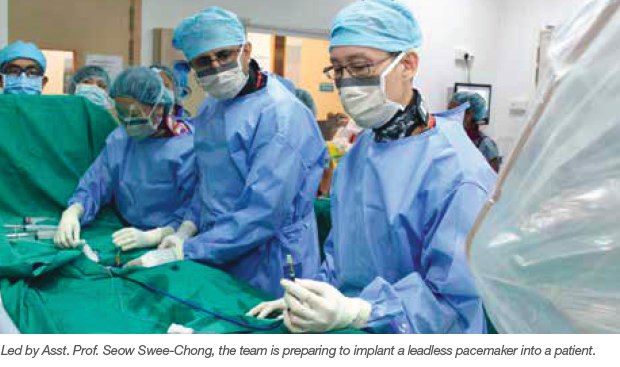
Leadless Pacemakers
National University Heart Centre, Singapore (NUHCS) constantly seeks innovation and technology so that our patients can continue to lead quality lives. Asst. Prof. Seow Swee-Chong updates us on the latest leadless pacemaker.
Every year, nearly 1,000 cardiac devices (including pacemakers) are implanted in Singapore. A cardiac pacemaker is a small device that helps to regulate the heart rate. The usual pacemaker has a pulse generator (battery) implanted in the chest wall with pacing leads (or wires) introduced through blood vessels and attached to the heart muscle. Though uncommon, pacing leads can cause swelling or bleeding, damage to blood vessels, and a collapsed lung. They can also be affected by infection. Another difficulty is the absence of vascular access to place these leads in some patients.
Reducing complications
To potentially eliminate many of these complications, leadless pacemakers that are much smaller in size have been recently developed. With an estimated longevity of 10 years, these devices are implanted directly into the heart where they emit an electrical impulse to control the heartbeat.
Further Developments
Initial studies have shown that leadless pacemakers can be implanted safely with stable pacing parameters over the short term. However, it is currently only limited to single chamber pacing. Research is ongoing to develop leadless systems in two chambers coordinating wirelessly.
Another exciting development is the possibility of using kinetic energy from cardiac motion to fuel the pacemakers, thus eliminating the issue of battery depletion and device replacement.

Catch our video on Cardiac Implantable Electronic Devices on NUHCS’s YouTube channel!
www.youtube.com/user/NUHCS.
By Asst.Prof. Seow Swee-chong
